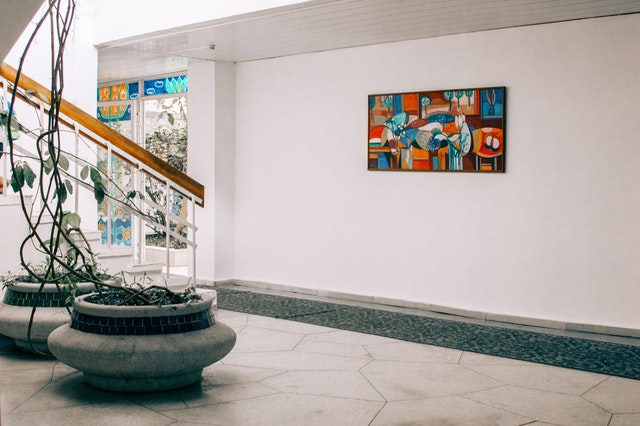How Traditional and Digital Display Systems Affect Art
Displaying artwork requires consideration and thought in terms of height display, frames, location and spotlights. When considering the placement of any artwork, you need to be keeping in mind the size of the piece in centimetres or pixels. If you are putting up a small painting on a large wall, then it’s going to unpredictable, the same as displaying several excellent articles on a single wall is only going to make it look cluttered.
Traditional Display
As a rule, it is good to be using a single large painting on one wall to create a focal point in that area. Consider hanging artwork up behind larger furniture like a sofa. Smaller paintings work well when grouped in an unusual format to make a set. Pictures displayed at eye-level make for more comfortable viewing and invites the audience to familiarise themselves with the artwork.
Viewers generally should not be straining their eyes or neck to see the painting. Align the art accordingly, the width of the outside frame and its colour will need to be reviewed, keeping mind the space and lighting around it. Ornate frames work well for Victorian décor while dark coloured will delineate the painting from the background.
On the other hand, sculpture art won’t be using a traditional frame. We must look to designs that enclose the entire piece. Consider the more flexible and customisable Frank system glass displays. This glass system puts an extra shine on the artwork it contains, at the same time providing protection. This type of German-engineered display system covers all the places an artwork is presented, from tabletops to walls. It’s sure to encapsulate all the crazy ideas brought to life by artists.
If you have spotlights directed towards the artwork, these can help to highlight and display the artwork to its advantage of creating just the right ambience. However, there is an importance when it comes to choosing indirect lighting, which tends to have a minimal impact on the pigments in the artwork. In any case, you should keep spotlights switched off to avoid heating the artwork, which can cause the colours to fade.
Digital Display
Digital technology and its resulting accessibility of images and information, while encouraging people to access collections online, all tend to negatively impact on and lower the desire of people wanting to see art up in person at museums.

Digital displays are levelling out the playing field for the professional artists and old-schoolers who are left behind. It’s the advent of the amateurs. Savvy new age artists are jumping over the traditional barriers of picky art dealers and museum exhibitions. Publishing their work on the Internet most definitely devalues their artwork, making both the artist and artwork more vulnerable to theft and defamation. It will mean the reversal of influenced based artworks produced for the approval of a select few curators. Instead, the digital display that is the Internet takes art towards a wider audience and a more open community, losing its exclusivity and snobbery.
It seems now more than ever; artists need to be more than just the artist; they need to be entrepreneurs. You cannot survive alone as an artist if you don’t have a robust business model.
There is worry concerning how the artists are going to make their living as the traditional revenue streams are slowly disappearing. The effects of digital technology on the arts have a strong consensus in the thriving digital art industry that it has created a “huge extension of the creative sphere”, meaning it has broadened the opportunities available for the non-professional to the most professional alike.




